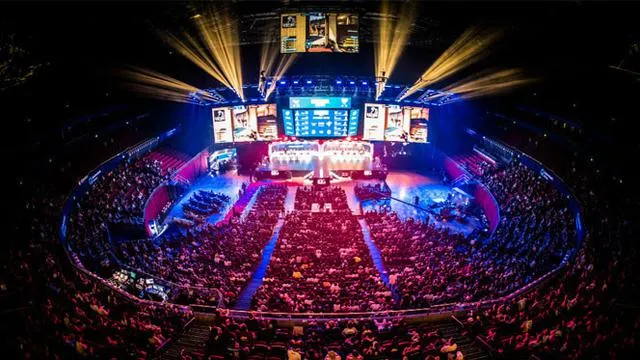
In the highly competitive world of fashion, the efficiency and effectiveness of your fashion supply chain are paramount. The fashion supply chain encompasses the series of steps involved in designing, producing, and delivering clothing and accessories to consumers. As global markets continue to expand and consumer expectations shift, businesses must evolve to meet these demands. This article explores the key components of the fashion supply chain, identifies the challenges it faces, and provides actionable strategies for streamlining operations, reducing costs, and ensuring long-term success.
Understanding the Fashion Supply Chain
The fashion supply chain is a complex network of processes that begins with the design of a product and ends when the final item reaches the consumer. These steps typically include sourcing raw materials, manufacturing, quality control, logistics, warehousing, distribution, and retailing. Each link in the chain plays a critical role in determining the quality, cost, and speed at which products are delivered to market. Understanding how each part of the fashion supply chain functions and interconnects is crucial for optimizing performance.
The first step in streamlining the fashion supply chain involves evaluating the entire process to identify inefficiencies or bottlenecks. These disruptions can be caused by various factors, such as delayed deliveries, poor communication, lack of transparency, and underperforming suppliers. By addressing these pain points, businesses can create a more agile and responsive fashion supply chain that aligns with the demands of modern consumers.
The Role of Technology in the Fashion Supply Chain
One of the most significant developments in recent years has been the integration of technology into the fashion supply chain. Technologies such as Artificial Intelligence (AI), Blockchain, and the Internet of Things (IoT) are transforming how fashion companies manage their operations. These tools can help automate processes, improve forecasting, and increase transparency across the supply chain.
For instance, AI can predict demand patterns based on historical sales data, weather forecasts, and social media trends. This allows companies to adjust production schedules and inventory levels accordingly, reducing the risk of overproduction or stockouts. Blockchain, on the other hand, ensures greater transparency by providing an immutable record of transactions and shipments, which can help prevent counterfeiting and ensure ethical sourcing practices.
The IoT connects physical devices and sensors across the fashion supply chain, enabling real-time tracking of products, shipments, and inventory. This level of connectivity allows businesses to respond quickly to disruptions, such as a delay in raw material delivery or a sudden change in demand.
The Importance of Supplier Relationships
A key factor in streamlining the fashion supply chain is establishing strong relationships with suppliers. Given the global nature of the fashion industry, companies often rely on suppliers located in different parts of the world. These suppliers can range from raw material providers to manufacturers and logistics partners. Ensuring that these suppliers are reliable, ethical, and aligned with your brand values is essential for maintaining the integrity of your supply chain.
Collaborating with suppliers can lead to better negotiation terms, faster response times, and reduced costs. Developing a long-term partnership with your suppliers rather than a transactional relationship helps to foster mutual trust and understanding. Suppliers who feel valued are more likely to prioritize your orders, improve their processes, and share valuable insights into ways to streamline the fashion supply chain further.
Moreover, integrating suppliers into your forecasting and planning processes can ensure that they are better prepared to meet your demand, reducing lead times and improving overall supply chain efficiency.
Streamlining Inventory Management
Inventory management is a crucial aspect of the fashion supply chain. With seasonal trends and fluctuating consumer demands, managing inventory can be challenging. Overstocking can lead to markdowns and unsold goods, while understocking can result in lost sales and missed opportunities.
Implementing a demand-driven inventory system is one of the best ways to streamline inventory management. This approach uses real-time data and predictive analytics to adjust inventory levels dynamically based on current and projected demand. By leveraging technology, companies can better anticipate when and where products will be needed, reducing the likelihood of excess stock and stockouts.
Moreover, fashion brands can also consider adopting a just-in-time (JIT) inventory system. This strategy ensures that inventory is only produced and delivered when it is needed, minimizing storage costs and reducing the risk of obsolete stock. JIT systems rely on precise demand forecasting, efficient logistics, and effective communication with suppliers to operate successfully.
Sustainable Practices in the Fashion Supply Chain
As sustainability becomes a key priority for both consumers and businesses, incorporating eco-friendly practices into the fashion supply chain is no longer optional. Brands are increasingly being held accountable for their environmental impact, and many consumers are willing to pay a premium for products that are ethically sourced and produced.
One way to improve the sustainability of your fashion supply chain is by sourcing raw materials from sustainable sources. For example, using organic cotton, recycled fabrics, or eco-friendly dyes can reduce the environmental footprint of your products. Additionally, incorporating circular economy principles, such as designing for recyclability or offering take-back programs for used clothing, can further reduce waste and promote sustainability.
Reducing energy consumption and carbon emissions across the fashion supply chain is another important consideration. By optimizing transportation routes, switching to energy-efficient manufacturing processes, and leveraging renewable energy sources, fashion companies can significantly lower their environmental impact.
Sustainability is not only beneficial for the planet but also for the bottom line. Consumers increasingly value transparency and environmental responsibility, and brands that prioritize sustainability often see increased loyalty and higher sales.
Logistics and Distribution Efficiency
The logistics and distribution segments of the fashion supply chain are essential for ensuring timely delivery of products to retailers and customers. Given the fast-paced nature of the fashion industry, a quick response to demand fluctuations is vital. Retailers expect timely shipments, while consumers increasingly demand fast delivery times, sometimes even within hours of placing an order.
To streamline logistics and distribution, fashion companies can optimize their transportation routes and distribution networks. This involves selecting the most efficient shipping methods, consolidating shipments where possible, and ensuring that products are delivered on time without unnecessary delays.
Implementing an omnichannel approach to distribution can also enhance efficiency. This approach integrates both physical retail stores and e-commerce platforms into a unified system, ensuring that inventory is managed effectively across all channels. With a well-coordinated omnichannel strategy, fashion brands can fulfill orders from the most convenient location, whether that be a warehouse, store, or third-party logistics provider.
The Role of Data Analytics in Supply Chain Optimization
Data analytics plays an indispensable role in streamlining the fashion supply chain. By analyzing vast amounts of data across various touchpoints, companies can uncover valuable insights that drive efficiency and cost savings. For example, data can be used to identify trends in consumer preferences, predict demand for specific products, and highlight inefficiencies in production or logistics.
Through advanced analytics, businesses can optimize production schedules, improve inventory management, and enhance supplier performance. Additionally, data analytics can help identify and mitigate risks, such as supply chain disruptions or unexpected changes in consumer demand. With the right data, businesses can make more informed decisions that lead to a smoother and more profitable fashion supply chain.
Overcoming Challenges in the Fashion Supply Chain
Despite the numerous opportunities to streamline the fashion supply chain, there are several challenges that businesses must overcome. These challenges can include fluctuating raw material costs, political instability, trade regulations, and labor shortages.
One of the best ways to mitigate these risks is by diversifying your supplier base. Relying on a single supplier or manufacturer can leave your business vulnerable to disruptions. By establishing relationships with multiple suppliers across different regions, you can minimize the impact of unforeseen events, such as natural disasters or political unrest.
Furthermore, staying informed about changes in regulations and tariffs can help businesses remain compliant and avoid delays. Fashion companies that are proactive in managing risks are better positioned to adapt quickly and continue to meet consumer demand.
Conclusion
Streamlining the fashion supply chain is an ongoing process that requires careful planning, strategic thinking, and the integration of advanced technologies. By focusing on key areas such as supplier relationships, inventory management, logistics, sustainability, and data analytics, businesses can create a more efficient, cost-effective, and agile supply chain.
In a fast-moving industry like fashion, the ability to adapt quickly to changes in demand and market conditions is critical. With the right strategies in place, fashion brands can not only enhance operational efficiency but also deliver products to consumers faster, with greater precision and quality. Ultimately, optimizing the fashion supply chain can provide a competitive edge, allowing companies to thrive in an increasingly complex and dynamic marketplace.







